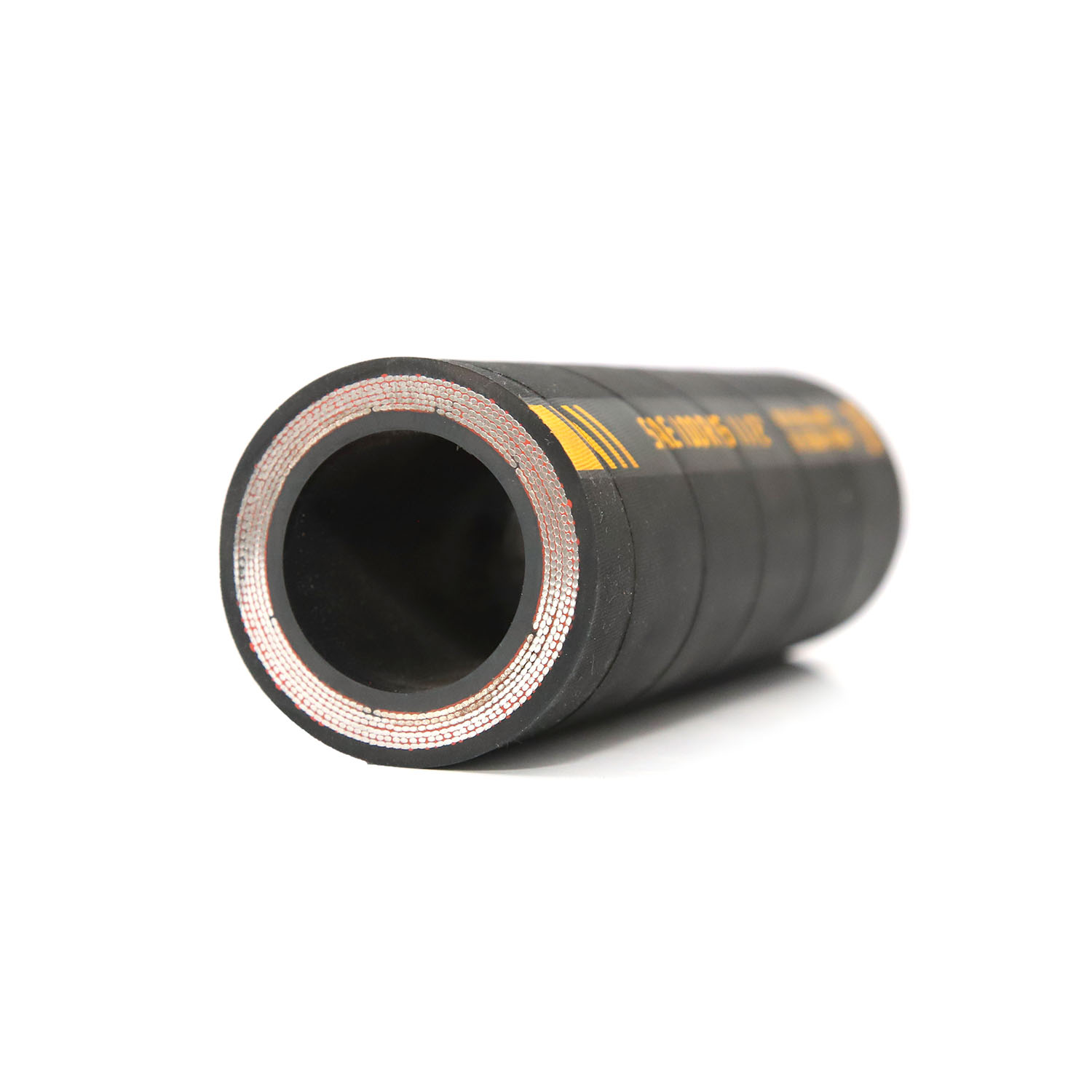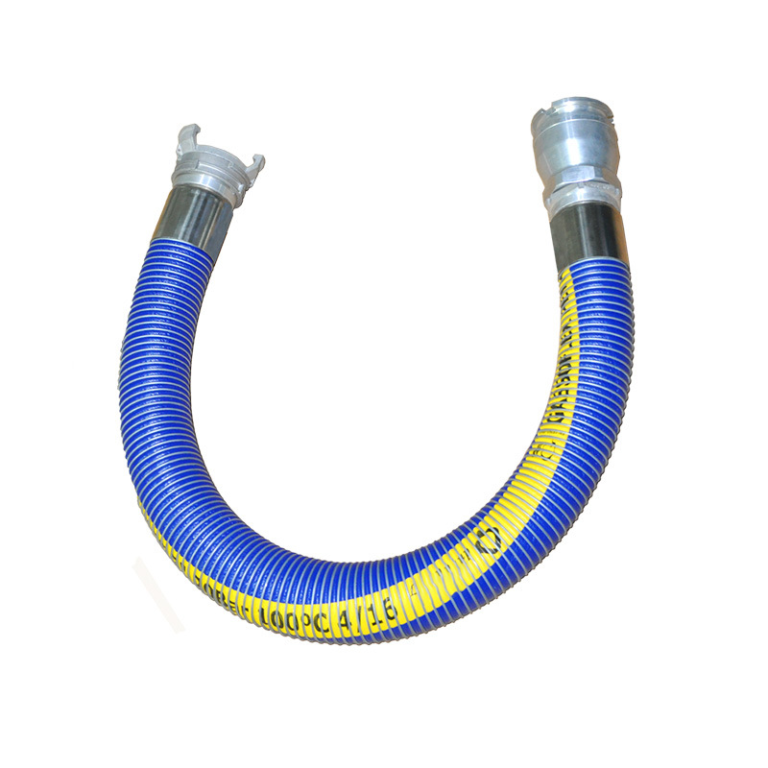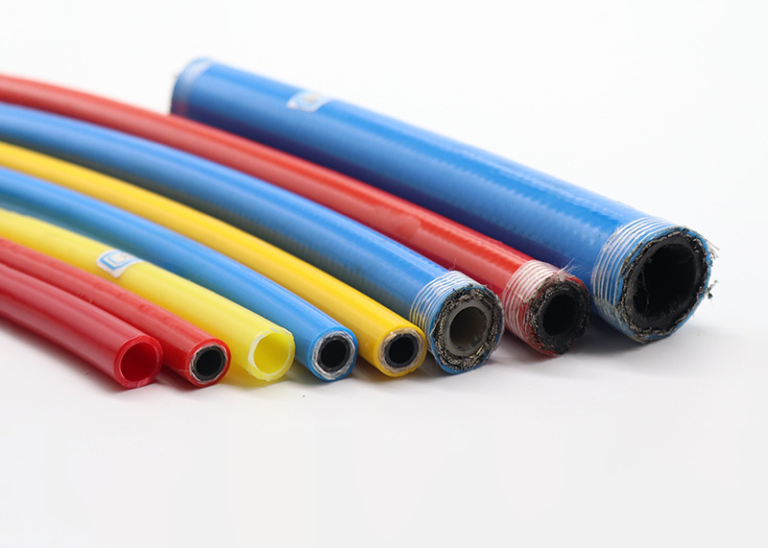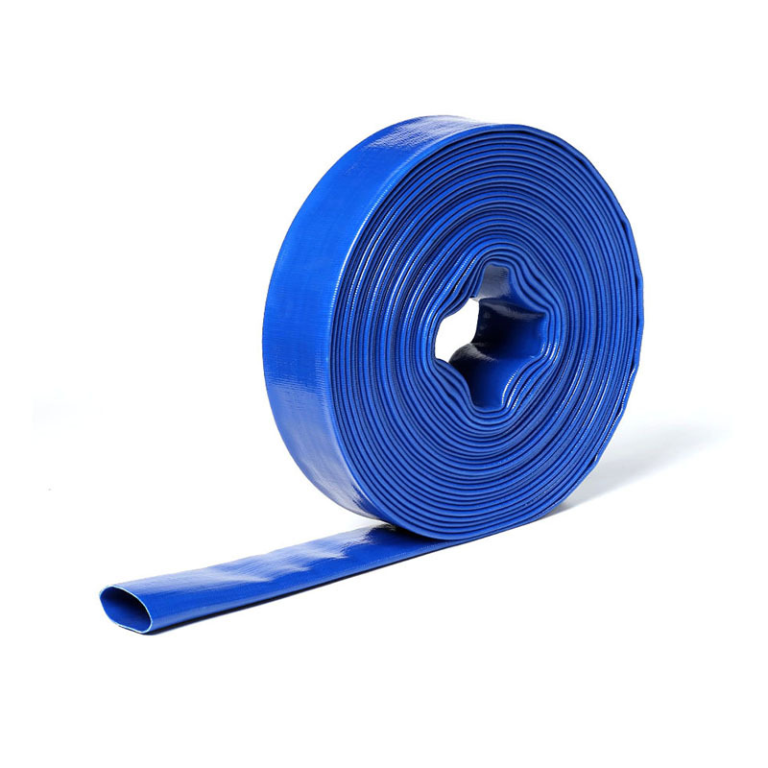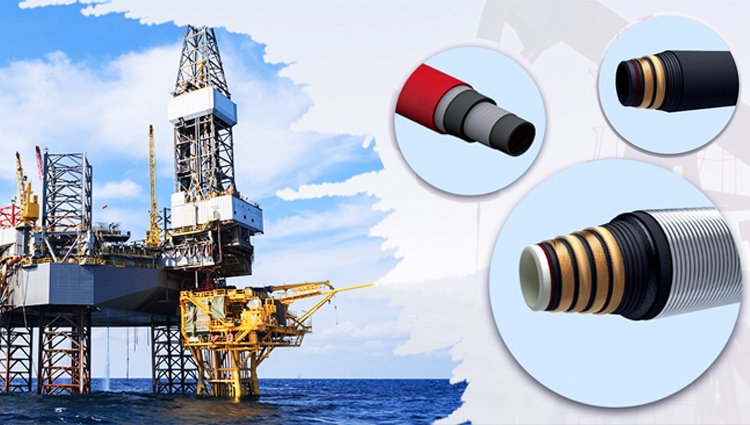The structure and principle of hydraulic hose
Hydraulic hoses are usually composed of an inner rubber layer, a reinforcement layer, and an outer rubber layer. The inner rubber layer is the part that is in direct contact with the hydraulic oil. It needs to have good oil resistance and sealing properties to prevent leakage of hydraulic oil and ensure the stability of the pressure of the hydraulic system. This layer of material is generally a synthetic rubber with excellent oil resistance, such as nitrile rubber.
The reinforcement layer is a key part of the hydraulic hose, which determines the strength and pressure bearing capacity of the hose. Common reinforcement methods include braiding and winding. The braided reinforcement layer can be steel wire braiding or fiber braiding. Steel wire braided hydraulic hoses can withstand higher pressures and are suitable for high-pressure hydraulic systems, such as hydraulic transmission systems of loaders and excavators in engineering machinery. Fiber braiding performs well in flexibility and is often used in some occasions where the bending performance of the hose is high and the pressure is relatively low. The winding reinforcement layer is usually made of steel wire. This structure can enable the hose to better maintain its circular cross-section under high pressure and further improve the pressure resistance.
The outer rubber layer mainly plays the role of protecting the reinforcement layer and the inner rubber layer. It needs to resist the influence of external physical damage, chemical corrosion and environmental factors. Generally, wear-resistant and weather-resistant rubber materials, such as chloroprene rubber, are used to enable hydraulic hoses to work stably and for a long time in harsh industrial environments.
The working principle of hydraulic hoses is based on Pascal’s law. When pressure is applied to one end of the hydraulic system, the hydraulic oil is transmitted to the other end through the hydraulic hose, thereby achieving force transmission and amplification. In this process, the hydraulic hose needs to withstand the pressure of the system without breaking or leaking, while also ensuring the smooth flow of hydraulic oil.

